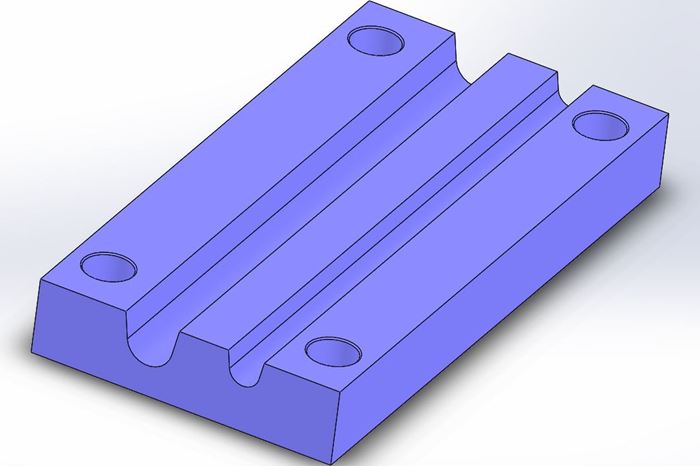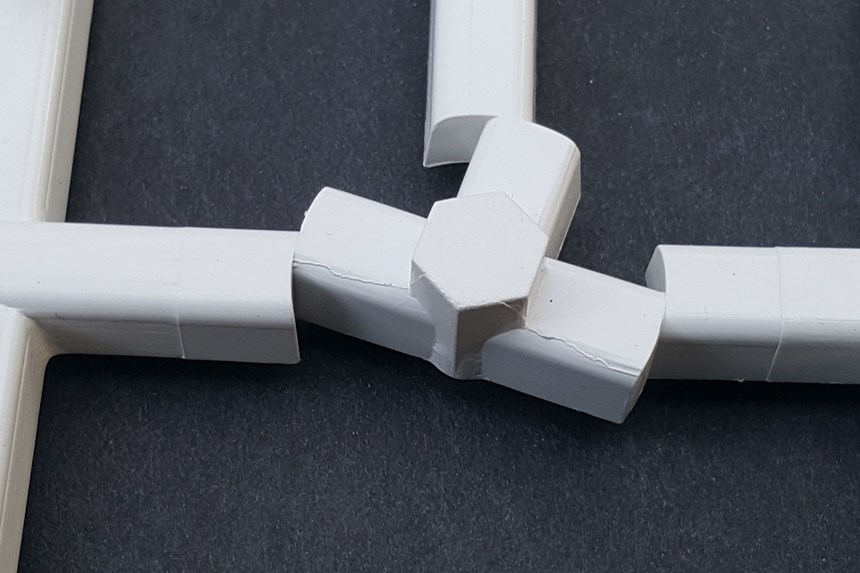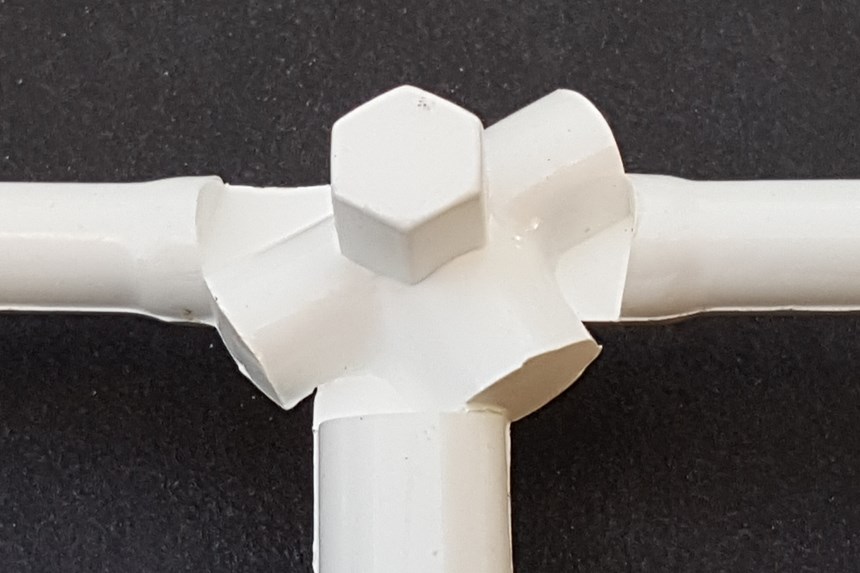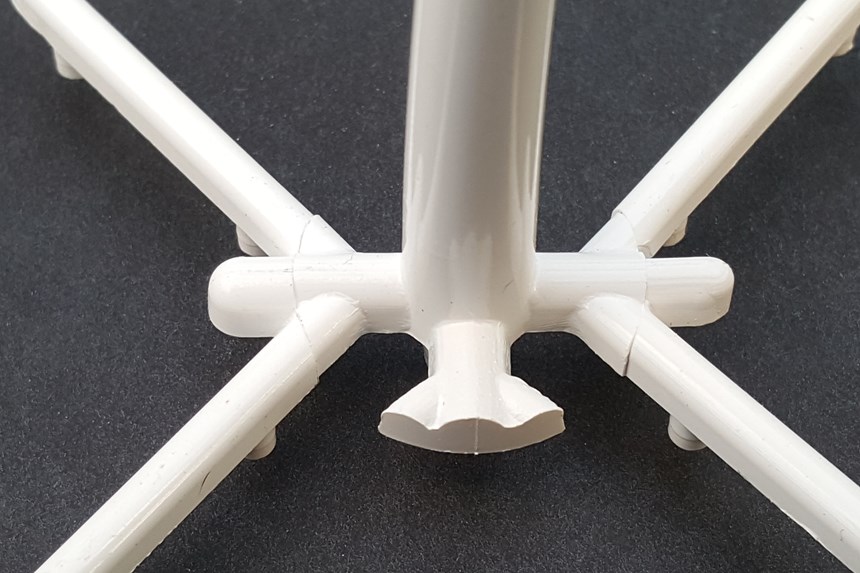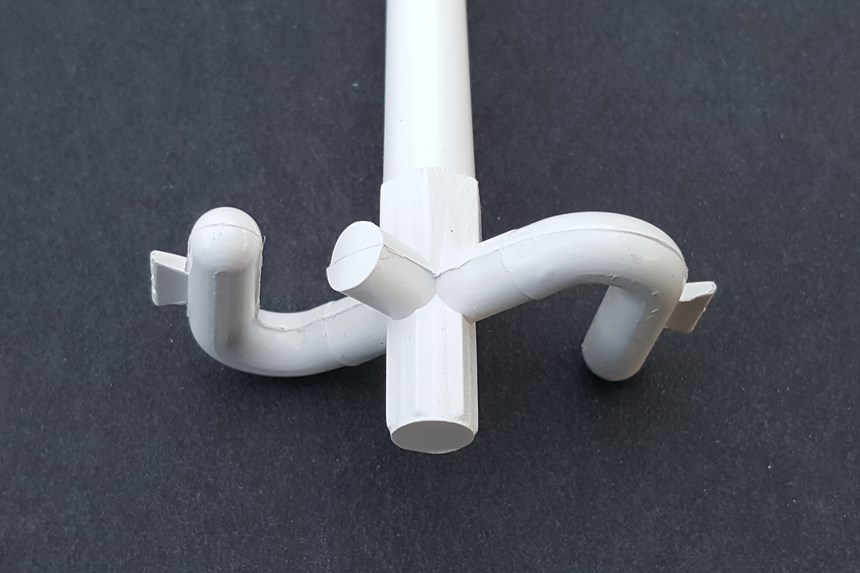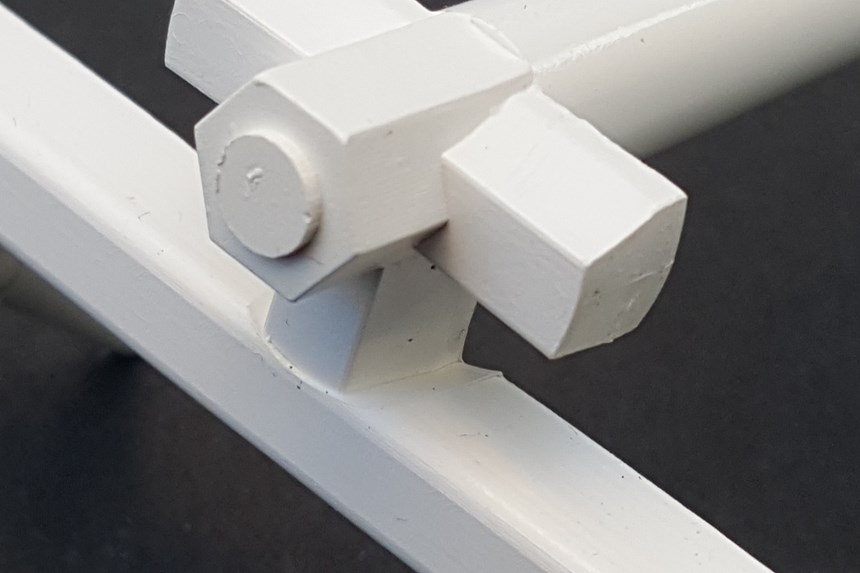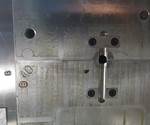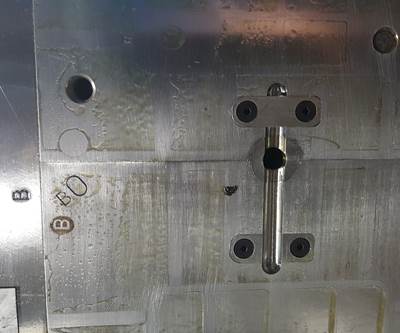PART 2 OF 2: Tricks of the Trade on RTOs, RSOs
They have a lot more to offer molders than just shutting off a cavity. Let’s take a closer look.
Most people think runner shutoffs (RSOs) are only needed for family molds. That’s not true. Many people use them in dedicated high-cavitation molds. Let’s say you have a four- or eight-cavity mold, and one of the cavities has a problem. Sometimes it’s advantageous to be able to quickly and temporarily block off that cavity—in the press—and continue molding. Your profit margin just dropped by 12% to 25%, but you are still able to fulfill a promised delivery date to your customer.
I cannot stress how important it is in this situation to have the mold repaired at the end of the production run, so as not to have a cavity blocked off at the start of the next run. In addition to the loss of profit margin and extended time to make the production quantity, you also expose yourself to potential mold damage. Most molders have a process setup sheet for every mold. That sheet is based on using all the cavities in the mold. So, what happens when you dial in the shot size for eight cavities, but only six or seven are open? Flash, overpacked parts stuck in the cavity, broken ejector pins, or a cracked cavity insert are just a few of the problems you might encounter when you accidentally mold a “pancake.”
RSOs can do a lot more than just shut off a cavity or divert material flow. Quite often, when a cavity in a family mold is blocked off, the material flow and fill pattern, and the packing pressures to the other cavities change. The same change in flow and fill can occur if the mold is used to run more than one type of thermoplastic material—especially if they have very different viscosities. An RSO can be deployed to change the gate location to the open cavities to overcome a flow issue. Changing the gate location can potentially improve or eliminate things like an undesirable weld-line location, excessive sink, or trapped gas. I had one mold that required some parts to be run in acrylic and others in rigid PVC. The acrylic parts were no problem, but the process became pressure-limited when running the more-viscous PVC. An RSO was added to the mold for the purpose of opening a second flow channel, which led to a second gate to feed the part.
Say you have a two-cavity family mold, and one of the cavities is an interchangeable insert that makes a different part. The mold has an RTO to run one cavity or the other, but usually both cavities are run at the same time. When you debug the mold using one of the interchangeable cavity inserts, everything is fine; but when you install the other cavity insert, the balance is way off because the part volume, wall thickness or flow length of the new part is considerably different. Adjusting the size of the gate to either one of the parts will result in a host of other problems—primarily the gate-seal times and different pack pressures in the cavities.
So instead of using a small round runner turn-off (RTO), a long, rectangular RSO insert could be extremely helpful in this scenario. It will allow you to adjust the flow and associated fill pressure to the gate by changing the runner size. The longer the runner you have to work with, the easier this rebalancing will be. Therefore, if you made two of these RSO inserts, each with a different size runner cut into it, you can now run either of the interchangeable cavities without the original flow imbalance problem and without having to change the gate diameter. One runner acts as a flow enhancer, and the other acts as a flow restrictor. If you have the real estate in the mold to mount the RSO insert off-center, you can cut both runner sizes in the face of just one insert, as shown in Fig. 1. Use the one runner size for one of the interchangeable cavities. Rotate it 180° to run the other interchangeable cavity. Or flip the RSO over to completely block the flow of material to the cavity.
Let’s assume you have a multicavity mold that requires a validated molding process. Murphey’s Law says that at some point in time one of the cavities is going to have an issue. That would require you to immediately shut down the press and make the necessary repairs. It’s not much of a problem if you have a spare cavity-and-core set sitting on the shelf that you can simply swap out and get back into production. But what if you don’t? Can you afford to be down for days, or even weeks? Running anything other than full cavitation is not only a non-validated process, there would most likely be a flow imbalance which could throw some of the other cavities out of specification.
But what if the mold had an RSO like the one in Fig. 1, which can improve the flow imbalance to the other cavities? During the initial mold sampling to establish the best process to submit for validation, you could intentionally block off a cavity and establish a second process, with less than full cavitation. Both processes could then be submitted for validation up front. Obviously, there would be an increased cost to validate two processes instead of just one, but doing so will keep you up and running if there’s a problem. Granted, it won’t be 100% efficient, but it buys you time to machine the necessary components in order to get back to full cavitation.
I have always preferred RSOs to RTOs. Most RTOs have a spring-loaded ball plunger, an O-ring, a Bellville washer, or some other type of component under their heel to prevent it from rotating as the molten material flows through the runner channel at high velocity and high pressure. Over time, either the spring in the ball plunger fails or the O-ring gets stiff, which allows the RTO to rotate freely (Figs. 2A, 2B). That’s when someone on the production floor will grind a point on the end of an old ejector pin and peen a dot between the RTO and the mold plate, to prevent it from rotating. This will elicit bad language from the next person who needs to rotate the RTO to a different position.
Conversely, due to an accumulation of gas and rust around their body, RTOs can become nearly impossible to rotate at all. Despite these shortcomings, RTOs don’t take up a lot of room in a mold and they are not very expensive to make or buy. Injection mold supply companies offer various types of standardized RTOs. I couldn’t find anyone who offered a standardized RSO. I guess that’s because there really is no such thing as a true standard RSO design. Most of them are specifically tailored to the needs of the individual mold. The three most common runner configurations machined into an RTO are a “T,” “L,” or straight through, but various other configurations are possible (Figs. 3A, 3B).
Obviously at some point in time an RTO needs to be rotated to a different position. The people on the production floor will use anything at their disposal to do this—some good, some not so good. I like to reduce their options to just one tool: a hex-key wrench. EDM’ing a hex into the RTO has several benefits (Figs. 4A, 4B). It provides a lot of bearing surface; it’s easier to orient the RTO into the proper position, and it minimizes the chance of damage caused to the RTO and the adjoining areas when using some other type of method—including a steel screwdriver or a pair of gate cutters—the weapons of choice on many shop floors. If the RTO is opposite the sprue bushing, the hex also functions as the all-important cold well to catch and retain any semi-solidified material residing in the machine nozzle tip.
For full-round runners, the RTO on the cavity side is typically the sprue bushing. I try to avoid this configuration and use two RTOs or RSOs just beyond the sprue bushing. The amount of plastic at the end of a sprue bushing is already massive. The addition of the hex, as well as multiple runner channels, make this location considerably more massive. This extra mass can require the cycle time to be extended by a few seconds, to prevent the sprue from breaking away from the runner and sticking in the sprue bushing when the mold opens.
Another reason I try to avoid the configuration cited above is that production personnel often forget to back the machine carriage off before trying to rotate the sprue bushing. The hex can get stripped because the machine’s nozzle-touch force prevents it from being rotated. Lastly, the production personnel don’t know if there is a dowel pin or a key under the head of the sprue bushing that prevents it from rotating on its own accord. If the bushing is in a mechanically fixed position, any attempt to rotate it in the press with a hex key will be futile.
Runner shutoffs are often an afterthought when designing an injection mold. When you understand all they have to offer—besides just shutting off a cavity—the folks in the trenches and in the office will appreciate having them when a problem occurs.
ABOUT THE AUTHOR: Jim Fattori is a third-generation injection molder with more than 40 years of molding experience. He is the founder of Injection Mold Consulting LLC, and is also a project engineer for a large, multi-plant molder in New Jersey. Contact jim@injectionmoldconsulting.com; injectionmoldconsulting.com.
Related Content
The Effects of Stress on Polymers
Previously we have discussed the effects of temperature and time on the long-term behavior of polymers. Now let's take a look at stress.
Read MoreThree Key Decisions for an Optimal Ejection System
When determining the best ejection option for a tool, molders must consider the ejector’s surface area, location and style.
Read MoreUnderstanding Melting in Single-Screw Extruders
You can better visualize the melting process by “flipping” the observation point so the barrel appears to be turning clockwise around a stationary screw.
Read MoreThe Fundamentals of Polyethylene – Part 2: Density and Molecular Weight
PE properties can be adjusted either by changing the molecular weight or by altering the density. While this increases the possible combinations of properties, it also requires that the specification for the material be precise.
Read MoreRead Next
Tricks of the Trade on RTOs and RSOs
The more you know about these runner diverters and shutoffs, the more you’ll use them. Here’s how to put them to work in your mold..
Read MoreFor PLASTICS' CEO Seaholm, NPE to Shine Light on Sustainability Successes
With advocacy, communication and sustainability as three main pillars, Seaholm leads a trade association to NPE that ‘is more active today than we have ever been.’
Read More

